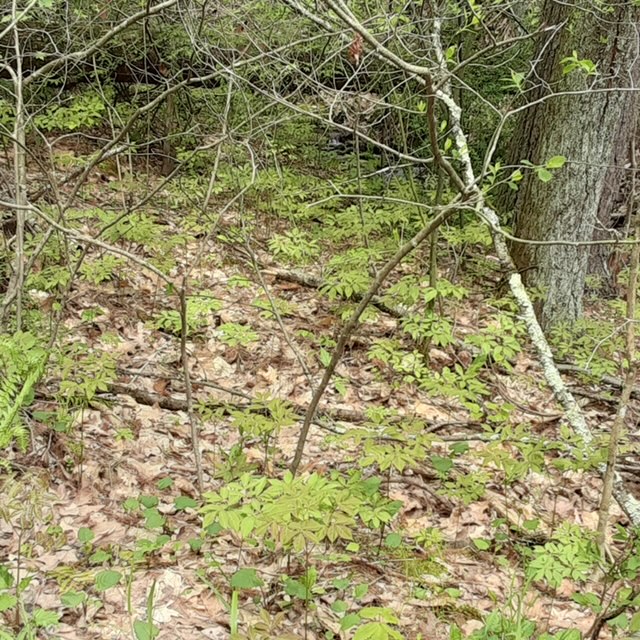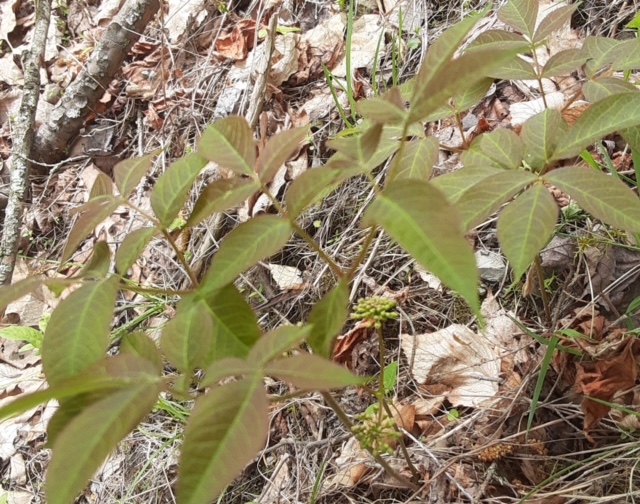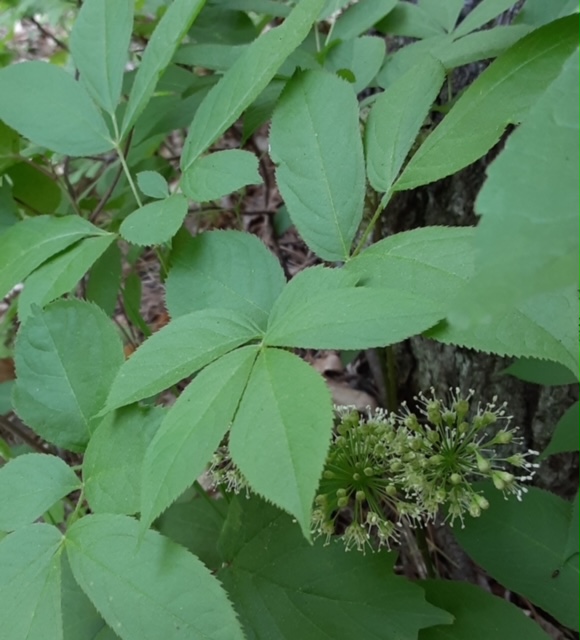By: Susan Sprout
Once I found and identified Wild Sarsaparilla, Aralia nudicaulis, it seemed to be everywhere, dancing back through the understory as far as I could see! So common, in fact, that in some environments, it may serve as an indicator species for its native Northern Hardwood Forests of Oak and Hickory, Beech and Maple.

In early spring, this plant shoots straight up from its woody, underground rhizome a smooth stalk or peduncle, with a curled bronze leaf that unfurls, greener and pinnately compound, having three smaller stems each with from three to seven tiny-toothed leaflets. Next, up comes another smooth stalk carrying just the flowers, usually three globe-shaped constellations of twenty to forty greenish-white five-petaled flowers that mostly stay hidden beneath the leaf.

The fleshy fruits that appear after pollination ripen to a rich deep purple, almost black during the fall. Birds like grouse and thrushes eat the berries, as well as foxes and chipmunks. Deer browse the leaves. Native Americans used the plant for food, tea and medicine, poulticing its leaves for treatment of wounds and sores.
Wild Sarsaparilla is a member of the Ginseng Family, not to be confused with another plant of the same common name, but a woody, prickly vine whose scientific name is Smilax ornata, a member of the Smilax or Catbrier Family. Both plants have been used as flavorings in soft drinks.


